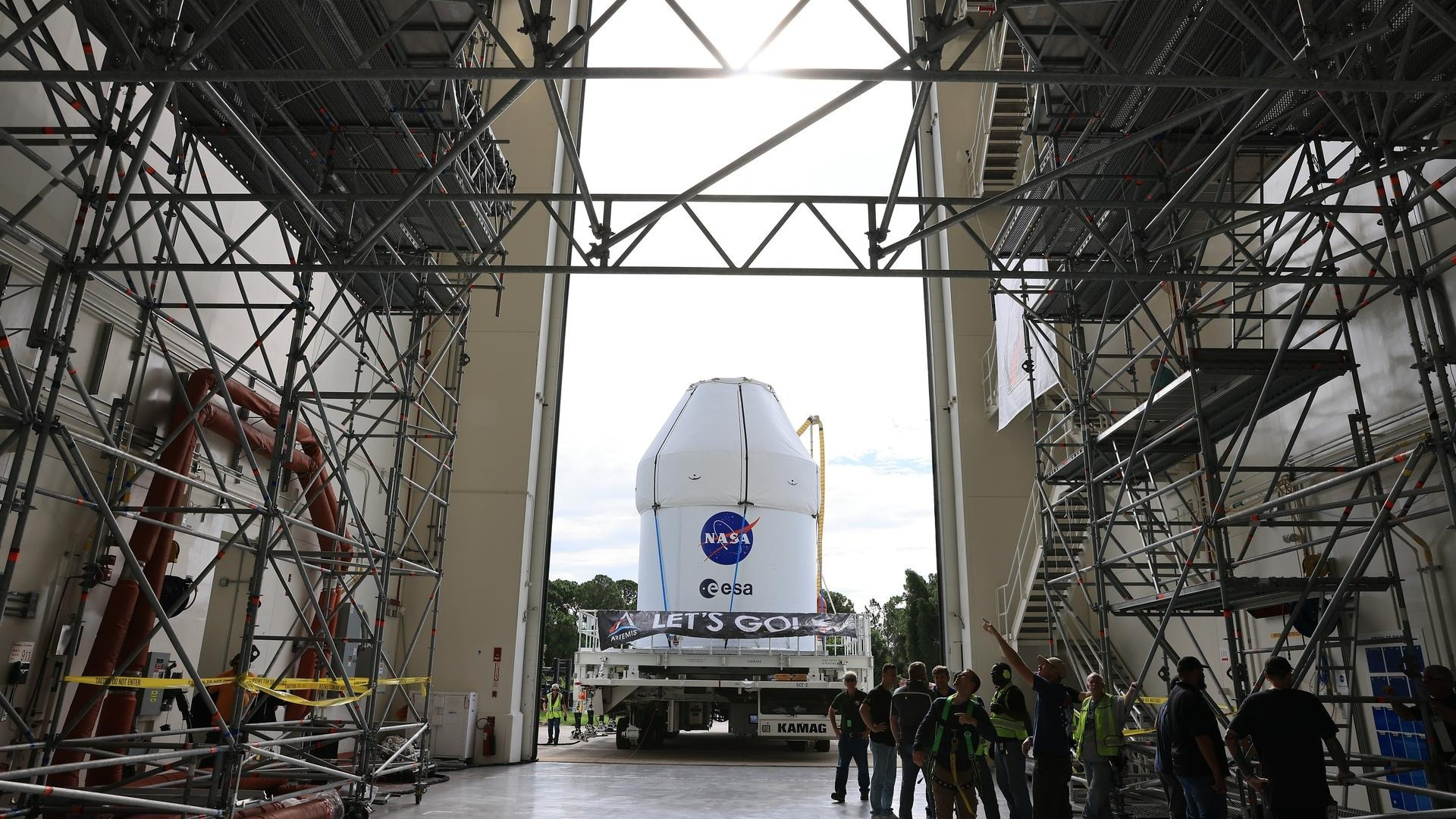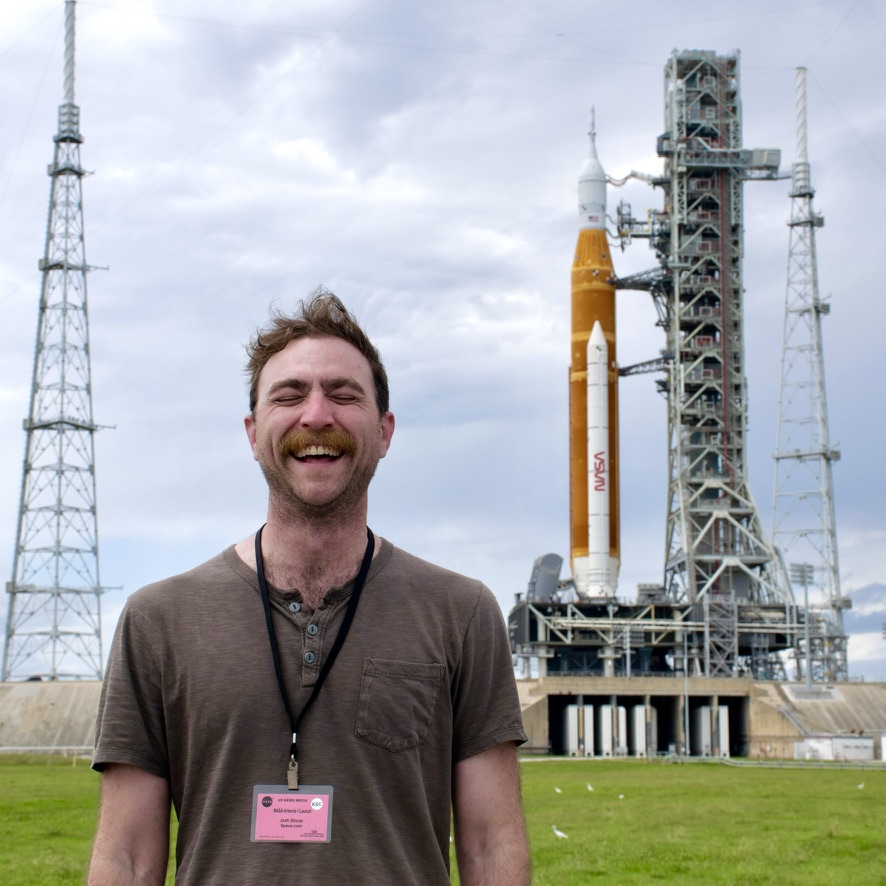NASA's Artemis 2 Orion spacecraft fuels up and moves closer to launch
Orion could launch as early as February 2026, but that is in the most optimistic of scenarios.

The Orion spacecraft flying humanity's next crewed mission to the moon has completed propellant loading and is headed to the next phase of launch preparations.
Teams at NASA's Kennedy Space Center (KSC), in Florida, moved the newly-fueled Orion crew capsule from the Multi-Payload Processing Facility (MPPF) to the Launch Abort System Facility (LASF), where it will be outfitted with its emergency escape system. The move marks a major milestone in preparing the spacecraft for the first crewed flight of NASA's Artemis program, Artemis 2, which will send four astronauts on a 10-day mission around the moon and back.
Artemis 2 is scheduled to launch no earlier than (NET) February 2026, and no later than (NLT) April 2026. Orion will carry NASA astronauts Reid Wiseman, Victor Glover and Christina Koch as well as Canadian Space Agency (CSA) astronaut Jeremy Hansen — they are set to become the first people to fly to lunar space since the end of the Apollo program in 1972.
Orion was moved to the MPPF in May, where it underwent processing and systems checks, and was loaded with propellants, high-pressure gases, coolant and other essential fuels for flight, according to a NASA statement.
While Orion was there, the Artemis 2 crew participated in their first onboard suits-on tests inside the space capsule. Donning their their Orion Crew Survival System spacesuits, the same ones they'll wear on launch day, they connected to Orion's life support and communications systems for a variety of simulated ground and flight conditions.
Now that Orion is inside the LASF, engineers will install its 44-foot (13.4-meter) launch abort system, designed to propel the crew capsule away from its Space Launch System (SLS) rocket in the event of an emergency. The tower and fairing assembly, which fit over Orion like a protective shell, include thrusters for abort and jettison of the spacecraft, as well as attitude control (steering) for anomalies that require the spacecraft be quickly and safely separated from SLS.
Once Orion's abort system installation is complete, the full Orion stack will be transported to KSC's Vehicle Assembly Building (VAB), where it will be placed atop SLS in High Bay 3, where the rocket is undergoing final assembly.
Breaking space news, the latest updates on rocket launches, skywatching events and more!
Artemis 2 will be Orion's first mission with crew aboard, and a critical step in NASA's Artemis program, which plans to establish a sustained, long term human presence on the moon. Artemis 1 successfully launched an uncrewed Orion to lunar orbit and back in late 2022, and NASA is targeting 2027 for the launch of Artemis 3, which will be the first mission of the program to land astronauts on the lunar surface.
For the upcoming mission, optimistic timelines place the Artemis 2 launch as early as February, but the astronauts flying the mission have voiced caution for that expectation.
"I think that, obviously, April is the official date. We are always, as a team, looking for opportunities to launch sooner, and some of those opportunities are as early as February," Koch said during a July 30 press event at KSC.
Echoing his crewmate, Glover explained, "because the launch date is no later than April, the only way to actually make it 'no later than' is to have some options to pull that forward."

Josh Dinner is the Staff Writer for Spaceflight at Space.com. He is a writer and photographer with a passion for science and space exploration, and has been working the space beat since 2016. Josh has covered the evolution of NASA's commercial spaceflight partnerships and crewed missions from the Space Coast, as well as NASA science missions and more. He also enjoys building 1:144-scale model rockets and human-flown spacecraft. Find some of Josh's launch photography on Instagram and his website, and follow him on X, where he mostly posts in haiku.
You must confirm your public display name before commenting
Please logout and then login again, you will then be prompted to enter your display name.
